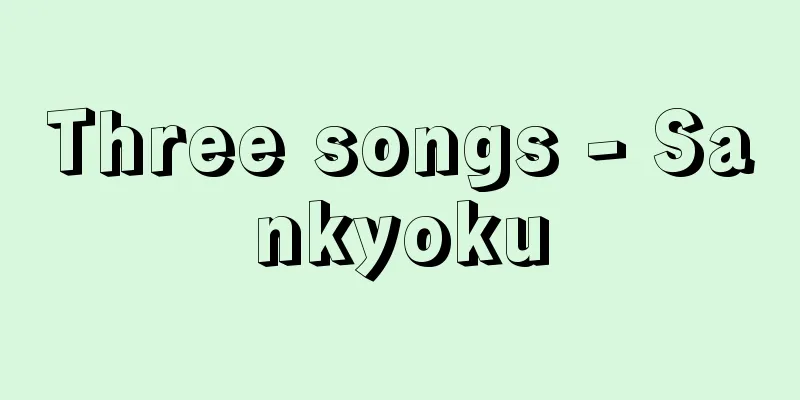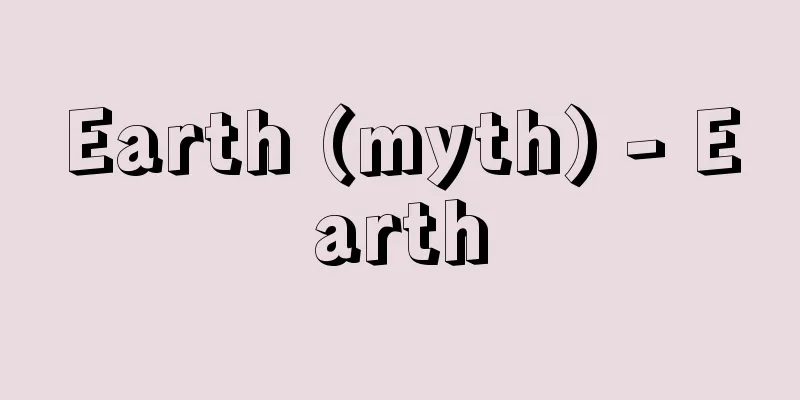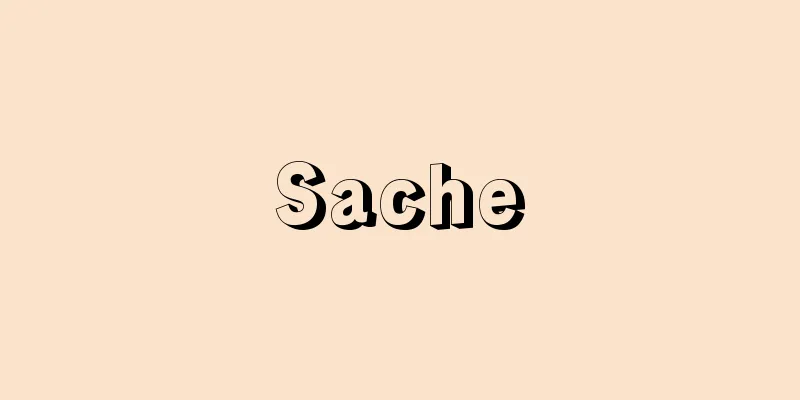Three songs - Sankyoku

|
〘Noun〙① A term for Japanese music, meaning an ensemble of three instruments. In fact, in the past, it was limited to the shamisen, koto , and kokyu, and later it was limited to the shamisen, koto, and shakuhachi. It can also refer to those instruments themselves. ※Essays, Dokusetsu (around 1724), vol. 1: "It is good for beginners to understand that all three instruments come from the flute." ※The Three Wives (1892), by Koyo Ozaki, vol. 1: "The koto in the distance and my shamisen. You should also practice your shakuhachi from now on, and we can play together with the three pieces." ② Refers to three important and prestigious pieces. For biwa, it refers to Ryusen, Takuboku, and Yang Zhencao; for koto music, it refers to Shiki no Kyoku, Ogi no Kyoku, and Kumo no Kyoku; for Noh music, it refers to Hatsuse Rokudai, Togoku Shita, and Saigoku Shita. ※Heike (before 13th century) 10 "The fourth prince of Engi, calming himself in the storm at Semimaru Barrier, played the biwa, when a man named Hakuga no Sanmi (abbreviated) overheard and passed on his three pieces." ③ Refers to three important secret historical facts in renga. Rhetoric and phrases at the beginning (5), middle (7), and end (5) of a line. Also refers to the three parts: ears (old poems, well versed in the original theory and considered as gathering), heart (mediation and creation of the gathering), and words ( expression and rhetoric). [Kokin Rendanshu (around 1444-48)] ④ Three advanced techniques in kemari. The three that are particularly important in the Asukai school are kaeriashi (returning foot) , nobiashi (extending foot) , and minisomari (side body ball) . (Naigai Sanjisho (around 1291)) Source: The Selected Edition of the Japanese Language Dictionary About the Selected Edition of the Japanese Language Dictionary Information |
|
〘名〙① 邦楽用語で、三種類の楽器の合奏という意味。実際には、古くは、三味線・琴(こと)・胡弓に、のちには、三味線・琴・尺八に限っていわれた。それらの楽器そのものをもいうことがある。※随筆・独寝(1724頃)上「すべて三きょくも、ふきぐみより出ると心得る事、初心のおぼへてよきことなり」※三人妻(1892)〈尾崎紅葉〉前「彼方の琴に私の三味線、御前も今から尺八の稽古して、三曲でも合はせて遊ばば」② 重要で格式の高い三つの曲をいう。琵琶では流泉・啄木・楊真操(ようしんそう)、箏曲で四季の曲・扇の曲・雲井の曲、謡曲で初瀬六代・東国下・西国下などをいう。※平家(13C前)一〇「延喜第四の王子蝉丸の関の嵐に心をすまし、琵琶をひき給ひしに、博雅(はくが)の三位と云し人〈略〉立ち聞きて彼の三曲を伝へけん」③ 連歌での重要な秘伝的故実三つをいう。一句の初(五)・中(七)・末(五)の修辞・措辞。また、耳(古歌、本説に暁通して寄合とする)・心(付合のとりなしと作為)・詞(表現・修辞)の三つをいう。〔古今連談集(1444‐48頃)〕④ 蹴鞠(けまり)で、高度な三種の技の三つ。特に飛鳥井流で重視される、帰足(かえりあし)、延足(のびあし)、傍身鞠(みにそうまり)の三つのこと。〔内外三時抄(1291頃)〕
出典 精選版 日本国語大辞典精選版 日本国語大辞典について 情報 |
>>: Sankyoronkou (English: Three Teachings Discussion)
Recommend
Inia boliviensis (English spelling)
… [Toshio Kasuya]. … *Some of the terminology tha...
Han Yu
A Chinese literary scholar and thinker of the Tan...
Ostwald process - Ostwald method
This is an industrial method for producing nitric ...
Antennae
The first appendage on the head of many arthropod...
Anergy
Originally used in contrast to allergy or hyperse...
Wang Rong (English name)
[Raw] Seiryu 2 (234) [Died] Eiko 2 (305) A high-ra...
nervus intermedius neuralgia (English spelling) nervusintermediusneuralgia
...Treatment includes anticonvulsants such as car...
Betacixius obliquus (English spelling)
...In Japan, they are commonly found among grass ...
Clinton Joseph Davisson
American physicist. Born in Illinois. After enrol...
Saroma [town] - Saroma
A town in Tokoro County in northeastern Hokkaido. ...
Flea - Flea
A general term for insects belonging to the order ...
Daikakuji lineage
One of the two imperial lines that split and oppo...
Grandchild
〘 noun 〙 (a variation of "umago (grandchild)&...
Margareta
…the legendary saint who was martyred in the pers...
Karamai - Karamai
A city on the western edge of the Junggar Basin in...









